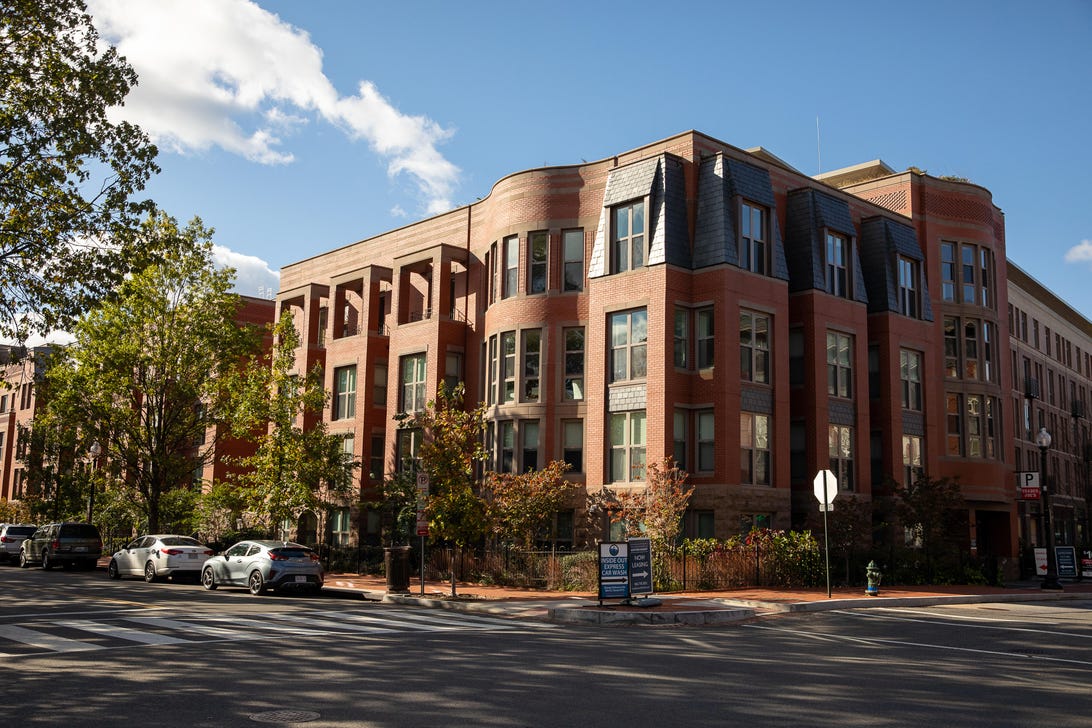
A couple of principal mortgage rates climbed up today again. 15-year fixed and 30-year fixed mortgage rates both climbed higher. The average rate of the most common type of variable-rate mortgage, the 5/1 adjustable-rate mortgage, also inched up.
Mortgage rates have been slowly rising since the start of this year, and are expected to increase throughout 2022. While rates are above their historic records set earlier in the pandemic, they’re still relatively low. Interest rates are dynamic – they rise and fall on a daily basis due to numerous economic factors. In general, now is a good time for prospective homebuyers to lock in a lower rate rather than later this year. Speaking with multiple lenders will help you find the best rate available for your financial situation.
30-year fixed-rate mortgages
The 30-year fixed-mortgage rate average is 5.28%, which is a growth of 22 basis points from one week ago. (A basis point is equivalent to 0.01%.) The most frequently used loan term is a 30-year fixed mortgage. A 30-year fixed rate mortgage will usually have a smaller monthly payment than a 15-year one — but often a higher interest rate. Although you’ll pay more interest over time — you’re paying off your loan over a longer timeframe — if you’re looking for a lower monthly payment, a 30-year fixed mortgage may be a good option.
15-year fixed-rate mortgages
The average rate for a 15-year, fixed mortgage is 4.45%, which is an increase of 15 basis points from seven days ago. Compared to a 30-year fixed mortgage, a 15-year fixed mortgage with the same loan value and interest rate will have a bigger monthly payment. But a 15-year loan will usually be the better deal, as long as you can afford the monthly payments. You’ll most likely get a lower interest rate, and you’ll pay less interest in total because you’re paying off your mortgage much quicker.
5/1 adjustable-rate mortgages
A 5/1 ARM has an average rate of 5.23%, an increase of 22 basis points compared to a week ago. You’ll typically get a lower interest rate (compared to a 30-year fixed mortgage) with a 5/1 adjustable-rate mortgage in the first five years of the mortgage. However, you might end up paying more after that time, depending on the terms of your loan and how the rate adjusts with the market rate. If you plan to sell or refinance your house before the rate changes, an adjustable-rate mortgage may make sense for you. But if that’s not the case, you may be on the hook for a much higher interest rate if the market rates shift.
Mortgage rate trends
Though 2022 kicked off with low mortgage rates, there has been a steady rise recently, and rates are expected to continue going up throughout 2022. Home loan rates are influenced by multiple economic factors. A major one is government policy set by the Federal Reserve, which raised rates in March for the first time since 2018 in response to record-high inflation. The Fed anticipates raising interest rates six more times this year. However, with the ongoing war in Ukraine, we’ve seen some fluctuations in mortgage rates, as global instability generally causes interest rates to drop. While you can expect rates to go up and down for these reasons, in general, if you’re looking to buy a house in 2022, you should be prepared for interest rates to keep going higher.
We use rates collected by Bankrate, which is owned by the same parent company as CNET, to track daily mortgage rate trends. This table summarizes the average rates offered by lenders across the country:
Today’s mortgage interest rates
Rates accurate as of Apr. 21, 2022.
How to find personalized mortgage rates
To find a personalized mortgage rate, meet with your local mortgage broker or use an online mortgage service. Make sure to take into account your current financial situation and your goals when trying to find a mortgage. Things that affect what mortgage interest rate you might get include: your credit score, down payment, loan-to-value ratio and your debt-to-income ratio. Generally, you want a higher credit score, a larger down payment, a lower DTI and a lower LTV to get a lower interest rate. The interest rate isn’t the only factor that affects the cost of your home — be sure to also consider other costs such as fees, closing costs, taxes and discount points. You should comparison shop with multiple lenders — including credit unions and online lenders in addition to local and national banks — in order to get a mortgage that’s the right fit for you.
What’s the best loan term?
When picking a mortgage, you should consider the loan term, or payment schedule. The most common loan terms are 15 years and 30 years, although 10-, 20- and 40-year mortgages also exist. Another important distinction is between fixed-rate and adjustable-rate mortgages. For fixed-rate mortgages, interest rates are the same for the life of the loan. For adjustable-rate mortgages, interest rates are the same for a certain number of years (usually five, seven or 10 years), then the rate fluctuates annually based on the current interest rate in the market.
When choosing between a fixed-rate and adjustable-rate mortgage, you should take into consideration the length of time you plan to live in your house. Fixed-rate mortgages might be a better fit for people who plan on staying in a home for quite some time. Fixed-rate mortgages offer more stability over time compared to adjustable-rate mortgages, but adjustable-rate mortgages may offer lower interest rates upfront. If you don’t have plans to keep your new home for more than three to 10 years, though, an adjustable-rate mortgage could give you a better deal. There is no best loan term as a rule of thumb; it all depends on your goals and your current financial situation. It’s important to do your research and understand your own priorities when choosing a mortgage.
